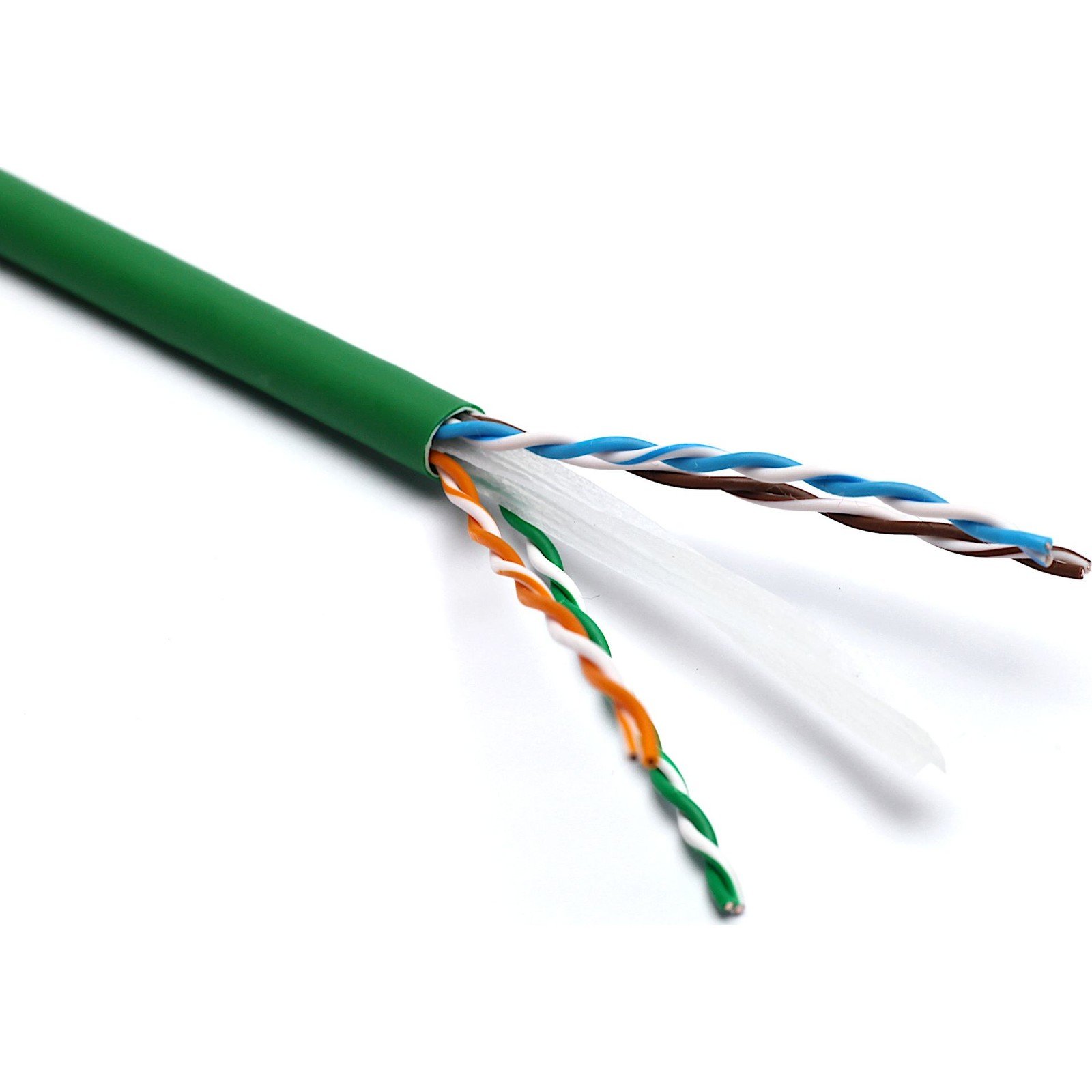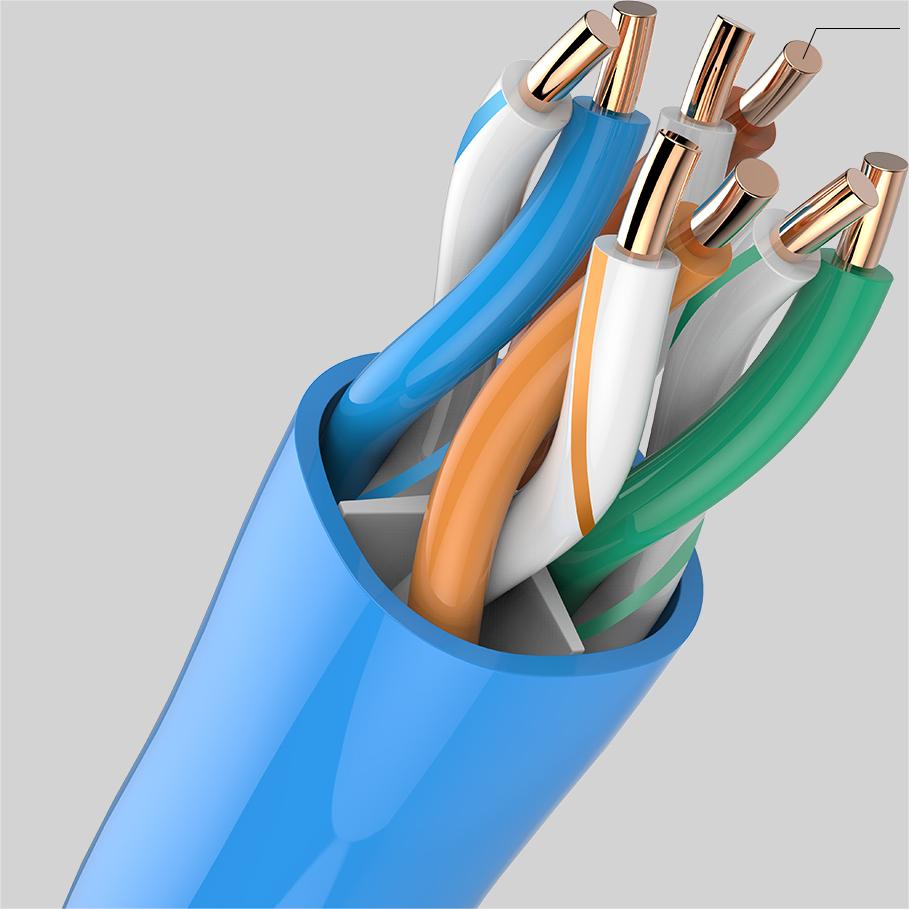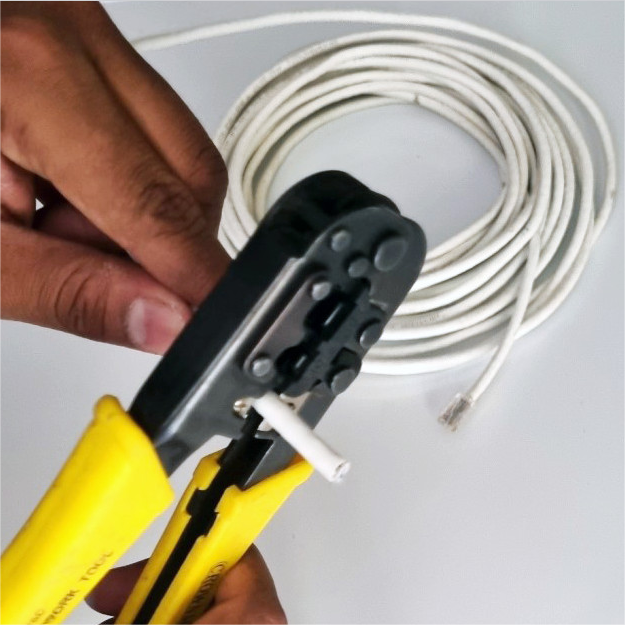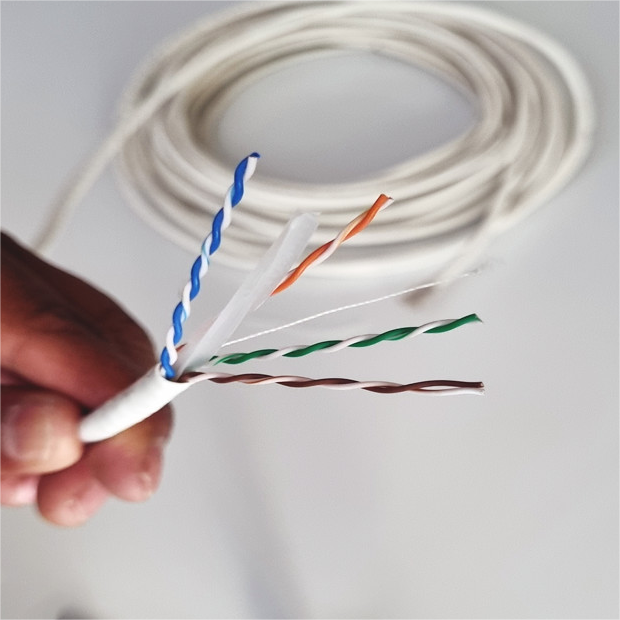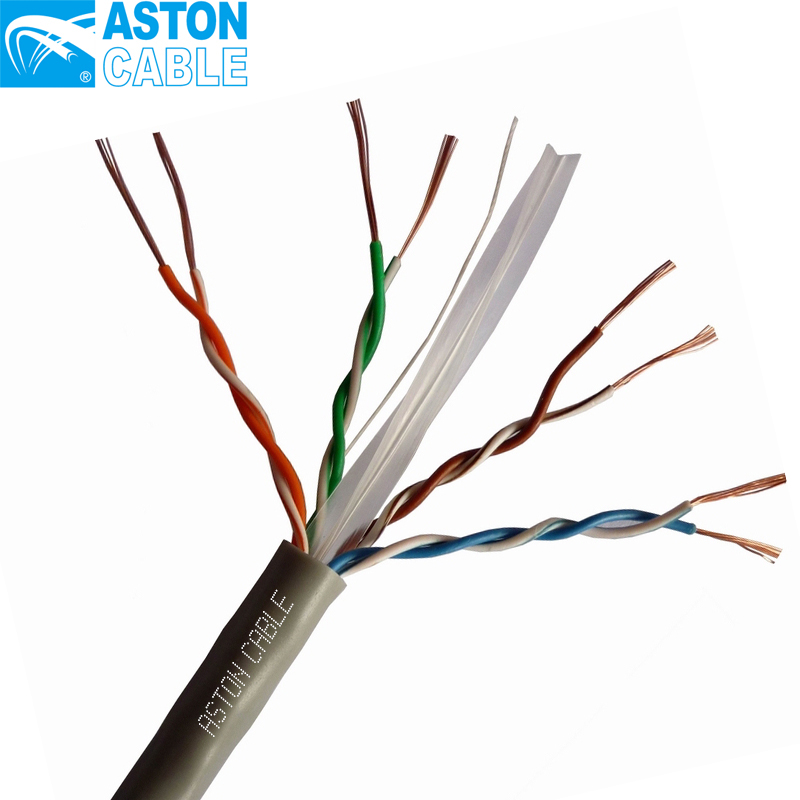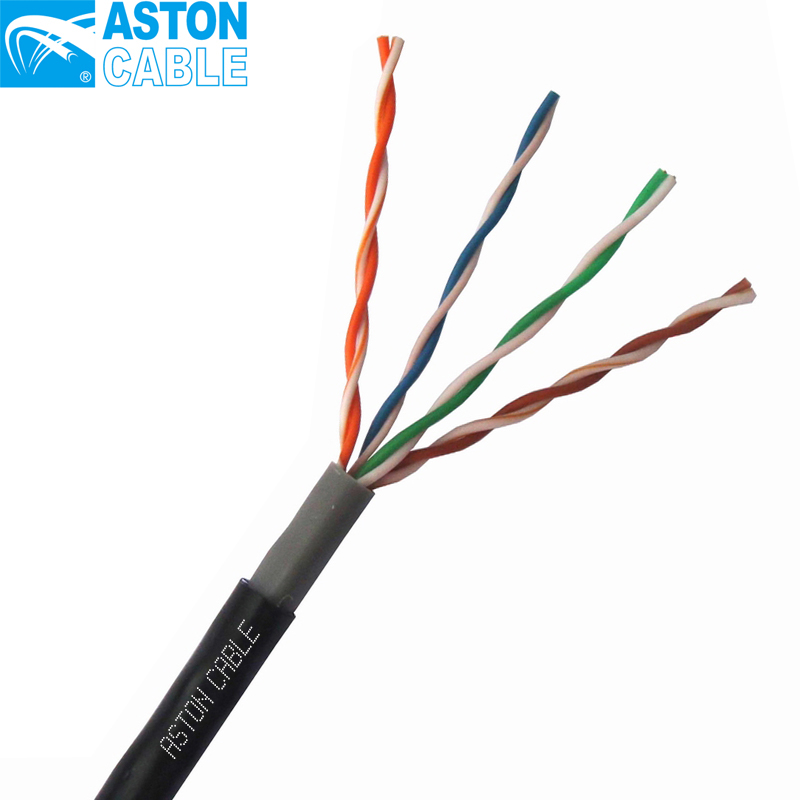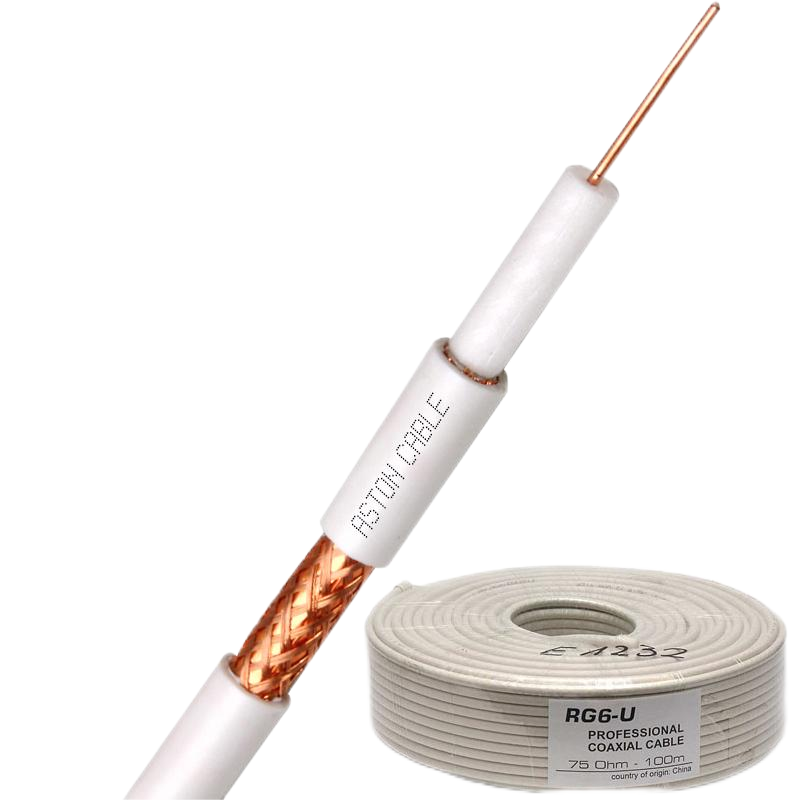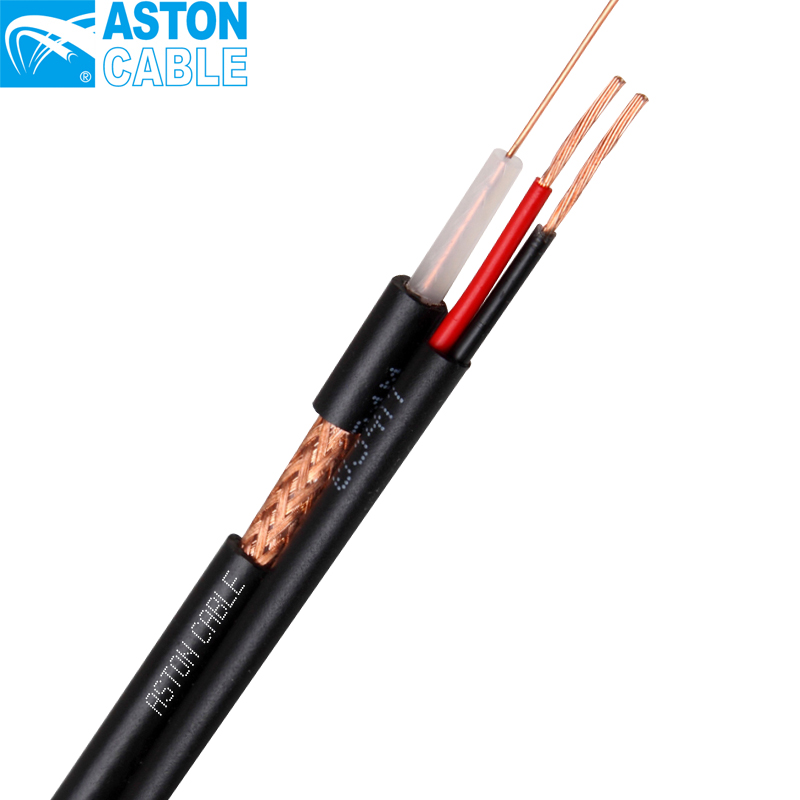Product Main Parameters
| Parameter | Details |
|---|---|
| Data Transmission Speed | 25-40 Gbps |
| Frequency Range | Up to 2,000 MHz |
| Cable Length | Max 30 meters |
| Cable Shielding | S/FTP |
| Conductor | Bare Copper |
Common Product Specifications
| Specification | Details |
|---|---|
| Jackets | PVC, LSZH, PE |
| Conductor | 23AWG |
| Color | Customized |
| Logo | OEM |
Product Manufacturing Process
According to authoritative sources, the manufacturing process of Cat8 cables involves precision engineering to ensure high-frequency data transmission. The process includes selecting high-grade copper conductors, applying robust shielding techniques such as S/FTP, and utilizing materials that minimize resistance and interference. Adherence to ANSI/TIA-568-C.2-1 standards is critical, requiring rigorous quality control procedures to ensure each cable meets performance benchmarks.
Product Application Scenarios
Research indicates that Cat8 cables are predominantly used in data centers due to their high-speed data capabilities and robust EMI shielding. They enable efficient switch-to-switch communication and server connections, essential in environments with heavy data processing requirements, such as cloud computing, real-time data analytics, and high-frequency trading platforms. These cables support the infrastructure necessary for future technological advancements by providing fast and reliable data transmission.
Product After-Sales Service
Aston Cable is committed to customer satisfaction by offering comprehensive after-sales support. This includes technical assistance, warranty services, and guidance on installation best practices.
Product Transportation
Our Cat8 cables are packaged using industry-standard methods to prevent damage during transit. Orders are shipped from Ningbo Port, utilizing reliable carriers to ensure timely delivery.
Product Advantages
- High-speed performance up to 40 Gbps
- Exceptional EMI shielding with S/FTP construction
- Backward compatibility with Cat6a and lower
- Ideal for data center applications
- Future-proofing capabilities for advancing technologies
Product FAQ
- What is the maximum speed supported by Cat8 cables? Cat8 cables can support speeds up to 40 Gbps, making them suitable for high-speed data environments.
- What is the frequency range of Cat8 cables? Cat8 cables operate at frequencies up to 2,000 MHz, providing high bandwidth for data transmission.
- Are Cat8 cables compatible with older Ethernet standards? Yes, Cat8 cables are backward compatible with Cat6a and lower standards.
- What is the typical use case for Cat8 cables? Cat8 cables are primarily used in data centers for switch-to-switch communications and server connections.
- Can Cat8 cables be used for outdoor installations? While primarily designed for indoor use, they can be used outdoors if appropriately shielded and protected from environmental factors.
- What is the maximum length of a Cat8 cable run? The maximum length to achieve 25/40 Gbps is limited to 30 meters due to copper's physical properties.
- How do Cat8 cables compare to fiber optics? Though fiber optics can cover longer distances, Cat8 cables offer comparable speeds for short-range data center connections.
- Do Cat8 cables require special installation techniques? Proper installation involves ensuring grounding and minimizing interference to maintain optimal performance.
- What materials are used in Cat8 cables? High-grade copper conductors and robust S/FTP shielding are used to ensure optimal performance and shielding.
- What are the benefits of S/FTP construction? S/FTP construction provides superior protection against crosstalk and EMI, ensuring reliable data transmission.
Product Hot Topics
- How does Cat8 future-proof network infrastructure? Cat8 cables are designed to support emerging technologies by offering high-speed data capabilities and robust shielding, preparing networks for future data demands and new applications. Their backward compatibility ensures they can be easily integrated into existing systems, providing a seamless transition into advanced infrastructure improvements. By investing in Cat8 now, organizations set the stage for adopting next-gen applications without the need for frequent upgrades.
- Comparing cost-effectiveness: Cat8 vs. Cat6a While Cat8 cables might come with a higher upfront cost compared to Cat6a, the value lies in their superior speed and shielding capabilities. They are particularly cost-effective in environments necessitating high data throughput and minimal latency, such as data centers. Over time, the investment is justified through reduced network congestion and future-readiness, saving costs on potential infrastructure upgrades as data demands escalate.
- Installation best practices for Cat8 cables Installing Cat8 cables requires meticulous attention to maintaining cable integrity and minimizing signal interference. This involves proper grounding and securing connections to avoid physical damage. Adhering to installation standards is crucial to leverage Cat8's full potential. Consulting professionals familiar with Cat8 specifications can ensure that installations are executed effectively, optimizing network performance and longevity.
- Understanding the impact of EMI on network cables Electromagnetic interference (EMI) can severely degrade network performance by disrupting data signals. Cat8 cables are designed with robust shielding to mitigate EMI, using S/FTP construction to maintain signal integrity even in high-interference environments. Understanding the significance of EMI protection is vital for maintaining network reliability, especially in areas with substantial electronic activity.
- The role of Cat8 cables in data center efficiency In data centers, where high-speed data transfer and low latency are critical, Cat8 cables provide the necessary infrastructure for efficient operations. Their ability to handle significant data loads while maintaining signal fidelity makes them indispensable for connecting high-performance servers and switches. By facilitating rapid data exchange, Cat8 cables contribute to overall energy efficiency and operational effectiveness in these high-demand environments.
- Addressing the length limitations of Cat8 cables One of the main constraints of Cat8 cables is their maximum length of 30 meters. This limitation means they are best suited for data center applications rather than extensive office networks. However, within data centers, this length sufficiency is optimal for connecting server racks and network equipment within a confined area. Proper planning and network design can leverage these cables' strengths without exceeding their effective range.
- Integrating Cat8 with existing infrastructure Transitioning to Cat8 cables doesn't require a wholesale overhaul of existing network infrastructure due to their backward compatibility. They can be integrated with older systems like Cat6a, ensuring continuity in network operations while gradually upgrading to higher performance standards. This flexibility supports a stepwise approach to enhancing network capabilities without significant disruption or additional costs.
- Exploring the demand for high-bandwidth applications The increasing need for high-bandwidth applications—such as cloud services, streaming media, and teleconferencing—drives the demand for Cat8 cables. By delivering up to 40 Gbps speed, these cables cater to environments requiring rapid data access and minimal delays, offering the bandwidth necessary for uninterrupted, high-quality service delivery. Their deployment helps in meeting the growing expectations for speed and reliability in modern networks.
- Enhancing data security with Cat8 cables Data security is a paramount concern as networks expand. Cat8 cables, with robust shielding and minimized susceptibility to interference, offer enhanced protection against data breaches and signal loss. This security feature is crucial when transmitting sensitive information across networks, providing peace of mind that data integrity is maintained even in complex network environments.
- The technological evolution of network cabling Network cabling has evolved significantly, with Cat8 representing one of the latest advancements. It reflects growing demands for speed, efficiency, and reliability. Understanding this evolution is crucial for network planners and IT professionals aiming to stay ahead of technological changes. Adopting Cat8 cabling is a strategic move towards achieving higher performance standards in network infrastructure, paving the way for future technological developments.
Image Description

